by Nancy Olson
When I visited Caran d’Ache on the outskirts of Geneva many years ago, the image that I retained – in addition to that of it being a very efficient facility – was of countless spaghetti-like strands of colorful lead awaiting their fate in barrels and on tables everywhere. Just about every hue imaginable was in evidence, and I felt like I was like walking through a Disney movie: pure vividness.
That lead, I discovered, was destined to fashion the Caran d’Ache artists’ pencils for which the company is so well known.
If you, like me, have acquainted yourself with Caran d’Ache through its wide range of elegant pens, a short lesson in history only enriches the company’s standing. Caran d’Ache was technically founded in 1915 by Arnold Schweitzer, and its name comes from the Russian word karandash, meaning “pencil.”
“Caran d’Ache” is also the pseudonym for Emmanuel Poiré, a prominent Russian-born satirist and political cartoonist of the late nineteenth century. Thus, the name was thoughtfully chosen as a reference to the company’s link to artists and their drawing tools – a link it maintains today.
Then-president Jacques Hübscher was my host during the visit, and he gave me a personal tour of the pen and artists’ products production areas, each of which was an exercise in quality control and sustainability. Writing instruments are checked for quality at every possible juncture both for aesthetics and performance.
The company also maintains an admirable stance on environmental issues, optimizing energy efficiency and closed-cycle processing of metals. The manufacture has replaced lacquers based on volatile organic compounds (VOCs) with new water-based lacquers.
Over the years, Caran d’Ache has matured into a true atelier. Its repertoire embraces all manner of Swiss-made writing and artists instruments as well as a long list of artisanal techniques – like lacquering, stone setting and engraving – many of which are also used in watchmaking.
Just this year, in a tribute to Chinese culture, the Year of the Horse limited edition fountain and rollerball pens were introduced. They follow the Year of the Dragon and the Year of the Snake collections. The body of the pen is flawless black lacquer, while the detailed horse engraving, which spans the cap and barrel, is highlighted with white lacquer.
One of my favorites, the Varius pen collection, was specifically designed a few years ago to incorporate new materials in pen-making and, I believe, to attract a younger audience to Caran d’Ache and pens in general.
Prior years featured pens made with ceramic, chain mail and, more recently, rubber.
This year’s Silas model is coated in silicon – also famously used in modern watchmaking – which gives it an interesting effect from changing light.
There are a couple of relatively recent pen introductions that deserve mention here, since I think they have really tested the company’s mettle in design and execution. One, the Caelograph, is just plain amazing, while the other, the 1010 Chrono Sport is a vigorous and enthusiastic nod to Caran d’Ache’s Geneva location. I’ll explain.
The Caelograph (meaning “write the sky”) has an ingenious mechanism that allows one to see the position of the stars and the constellations at any given time, on any date, on the very limited-in-space lacquer body of the pen via two rings and a rotating sleeve.
In my opinion, it’s a pretty incredible pen that you really have to experience to appreciate, and it’s interesting to note that it only utilizes “real” materials, meaning there is no plastic anywhere on this pen.
In fact, president of Caran d’Ache Carole Hübscher, who succeeded her father Jacques in 2012 (he retains the title of honorary president), calls this “haute écriture.”
And the 1010 Chrono Sport, part of the 1010 Collection – whose name is more than a passing nod to the usual position of the hands of watches on show – is an unabashed tribute to chronographs and Swiss watchmaking. Here, the two cages that constitute the body of the pen conjure up the wheels and gear trains in the movement of a watch.
On the skeleton, three delicate engravings suggest the counters and the decoration of the bridges, while the black inner chassis depicts the gear train of a chronograph, with one wheel painted in red. There are other horological references as well, and while it may initially sound contrived, I can assure you it’s not. It’s a well-done piece that appeals to watch and pen lovers alike – or those who straddle both interests….like me.
Carole Hübscher will be ushering in the company’s one-hundredth anniversary next year.
This leads me to yet another recollection of my visit to the manufactory. While there, I saw numerous historical pictures of the early days of the company and drawings by Poiré, which lined the office and corridor walls. I found them to be engaging and public remembrances of a time long gone. Today I believe they are also a symbol of this family-owned company’s overriding philosophy of using the past to inform the future and the many possibilities it holds. Bon anniversaire!
For more information, please visit www.carandache.com.
Quick Facts Caelograph
Barrel: Chinese blue lacquer with silver particles representing 51 constellations and 353 stars on platinum coating or solid rose gold with 22 diamonds
Clip: shaped like a compass needle
Nib: 18-karat gold-plated
Cap: Chinese blue lacquer with silver particles
Ink: piston pump or cartridge
Limitation: 120 fountain pens, 120 rollerball pens
Guarantee: lifetime
Approx. price: between $4,500 and $5,300
Trackbacks & Pingbacks
-
[…] of the Berlin Wall, 20 years of the Lange 1, 10 years of Greubel Forsey, 10 years of Hautlence, 100 years of Caran d’Ache, and 175 years of […]
-
[…] Further reading: Swiss Made: Geneva’s Caran d’Ache Soon To Celebrate A Century. […]
Leave a Reply
Want to join the discussion?Feel free to contribute!





















































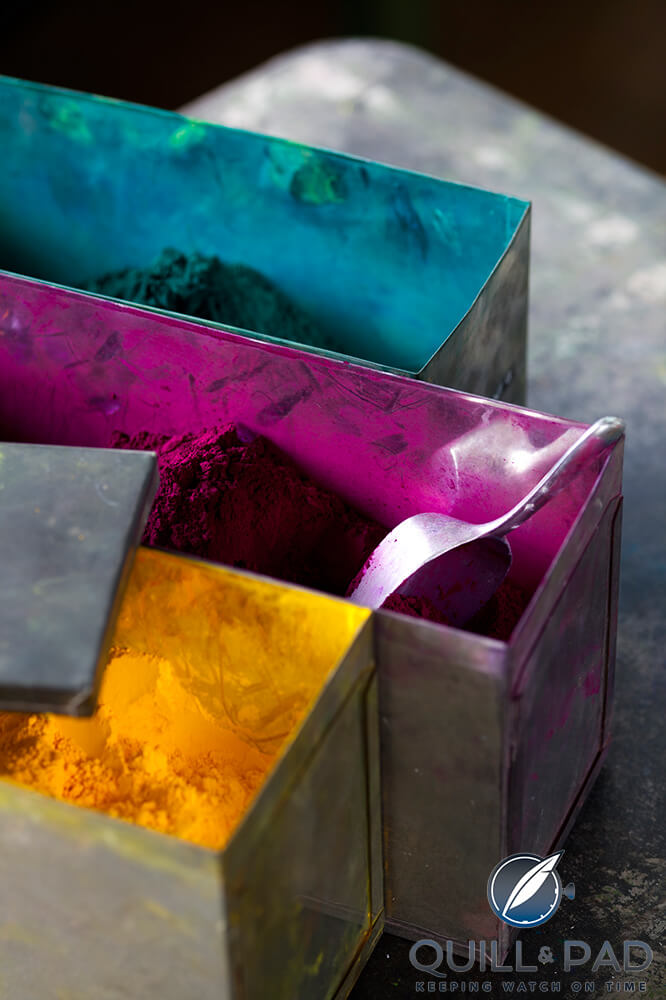
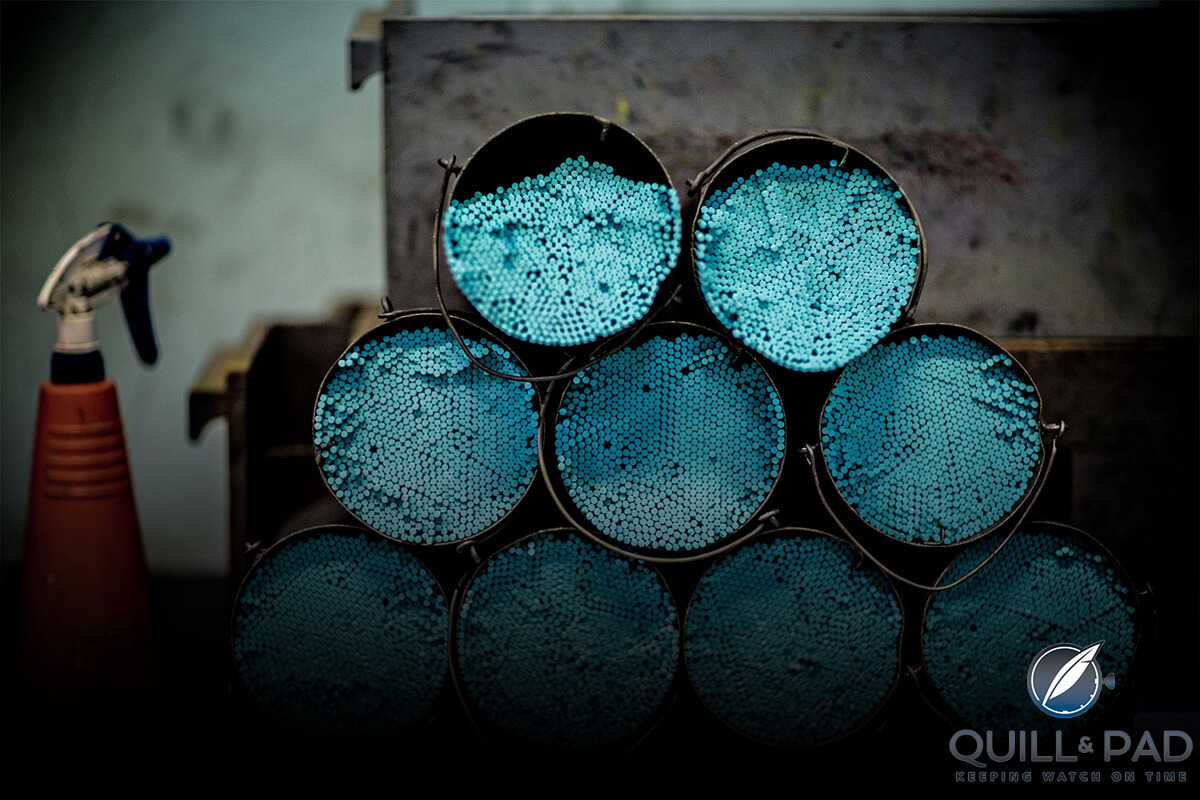


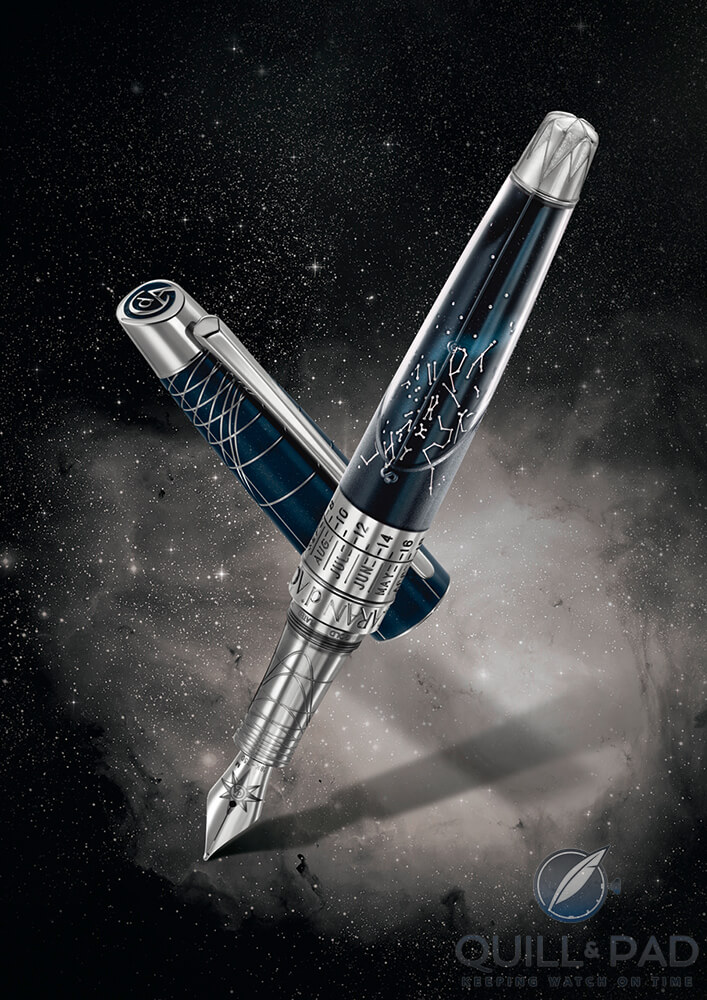

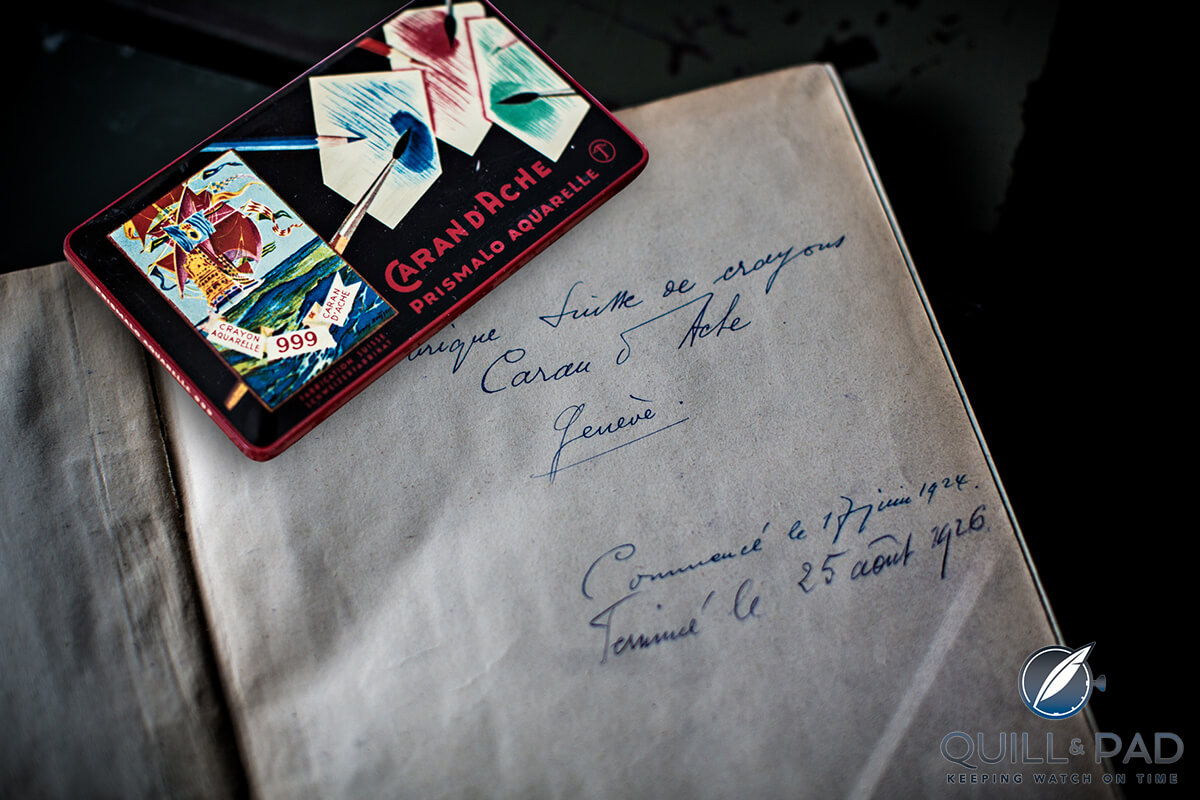
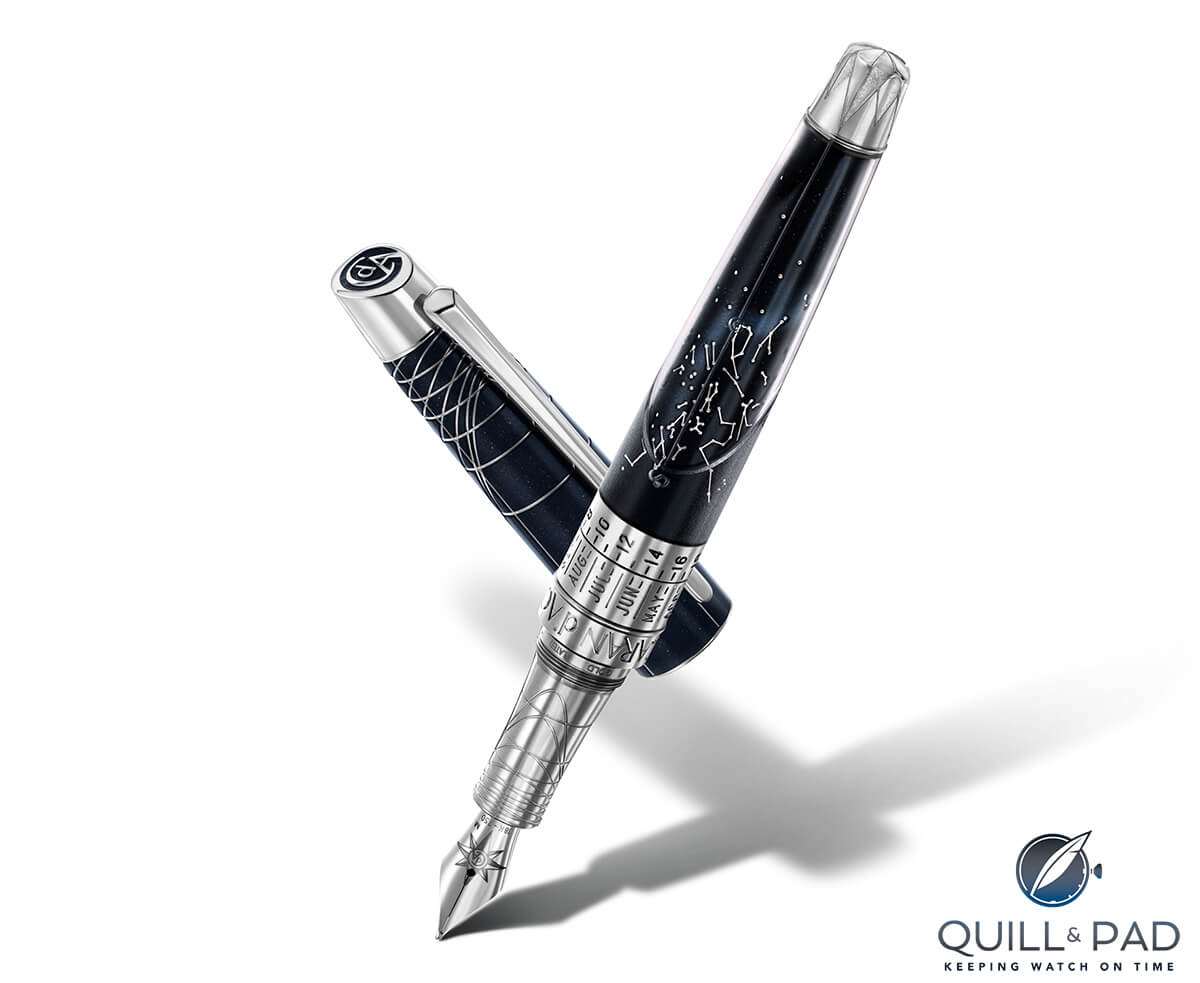
Alejandro Rosas de México, tengo pluma Piaget de Caran D‘Ache busco información es antigua chapa oro escudo Piaget.